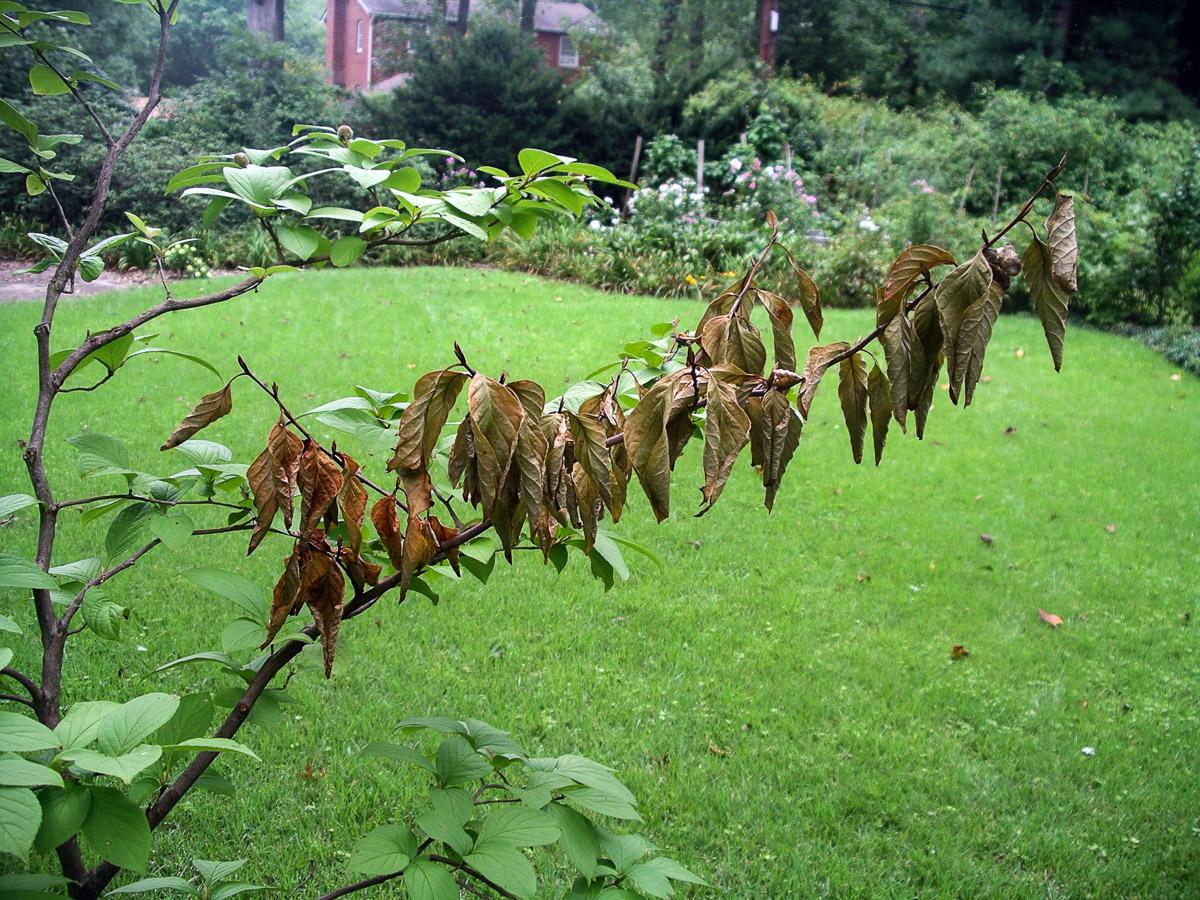Prolonged periods of drought or high temperatures may cause temporary or permanent damage to landscape plants.
Wilting and drought

- Wilting occurs when roots are unable to supply sufficient moisture to the stems and leaves. Plants vary in their tolerance to dry soil. Hydrangea, for example, is one of the first shrubs to wilt.
- Wilting for short periods of time does not harm plants.
- Plants will occasionally wilt on hot days because moisture is evaporating from the leaves faster than the roots can supply it. If there is ample soil moisture, the plant will absorb water in the evening to firm up the stems and leaves.
- A drought can cause serious damage, such as yellowing, leaf scorch, browning, early fall color, or early leaf drop if the dry period persists. A drought can also damage berries or inhibit flower bud formation.
- Severe heat and water stress when a plant is in bloom may cause scorching or browning of flower buds and blossoms.
- Some plants die suddenly after extended periods of drought. Others may take a longer period of time to succumb to the stress.
Evergreens and drought

- Most evergreens have shallow root systems and are among the first trees to exhibit signs of drought stress and wilting.
- Early wilt symptoms include drooping or pendant needles. These wilt symptoms may first appear in the late afternoon.
- Prompt watering will alleviate the symptoms.
- Eventually, needle tips will turn brown (scorch) and branch tips will show needle drop or dieback, possibly followed by the death of the tree if the drought continues.
- Premature fall needle coloration may be a symptom of drought injury.
Newly planted container-grown landscape plants and drought
- Water container plants thoroughly before you plant them in your landscape.
- Container-grown landscape plants are susceptible to drought stress once they are transplanted into the landscape. The organic mix in which plants are grown in the nursery can dry out quickly so plants should be regularly watered.
- Moisture may be available in the soil but sometimes does not move into the transplanted root ball rapidly enough to prevent moisture stress. It is important to water deeply to soak the roots.
- Plants being grown in containers in a nursery are typically watered at least every other day. This routine should be followed for approximately 2 weeks after planting.
